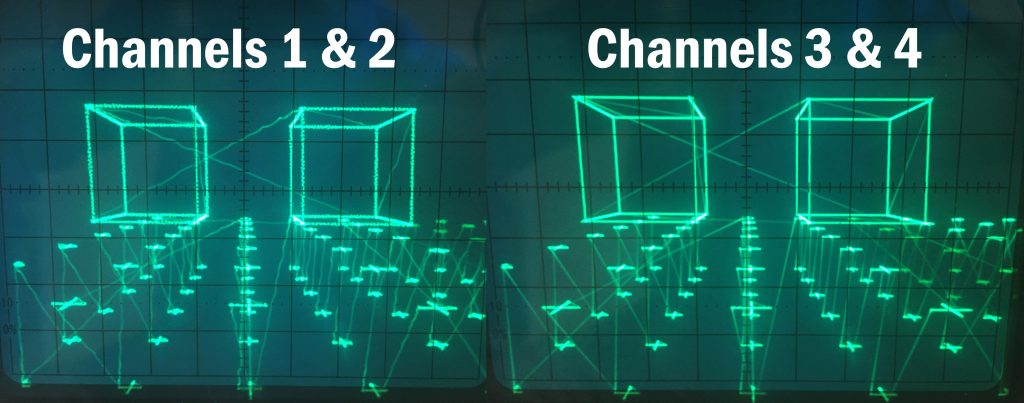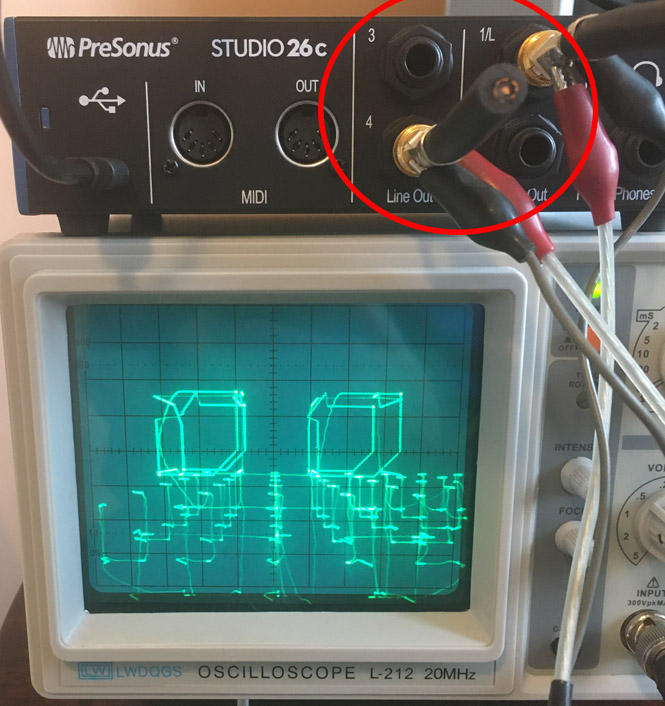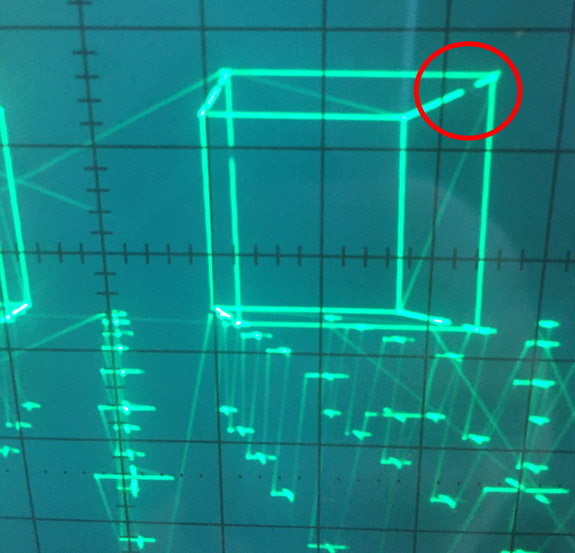Today I got a new oscilloscope! This new scope has a DC-coupled z-input that modulates the electron beam intensity and can be used for blanking (turning off the electron beam while it moves between shapes that it’s drawing).
When I hooked it up, I started to notice some strange quirks and limitations to my PreSonus Studio 26c audio DAC that I am using to drive the XY display mode of my oscilloscope: It seems that some of the audio outputs on this audio interface behave very differently than other outputs!
First off, I noticed that output channels 1 & 2, although they have the benefit of being adjustable by the volume knob on the front of the device and can have mic inputs live-mixed into their output, they are much noisier than output from channels 2 & 3:

The second thing I noticed was that there is actually a delay on channels 3 & 4 compared to 1 & 2! I haven’t calculated how much of a delay yet, but judging from the image, I would guess it’s around 20 samples at 192 kHz, or 0.1ms. This is obviously a big deal when trying to use them in tandem:

I intend to use 3 channels of this PreSonus DAC: two for X/Y control and 1 for blanking (brightness/intensity). This delay obviously has an impact on blanking:

You can see in this image that there are gaps in the shapes and the blanking lines are still visible because the intensity is not being modulated at the correct time due to the delay.
To address this issue, it won’t be too hard to put a software delay on the brightness output stream to line it up with the X/Y output streams.